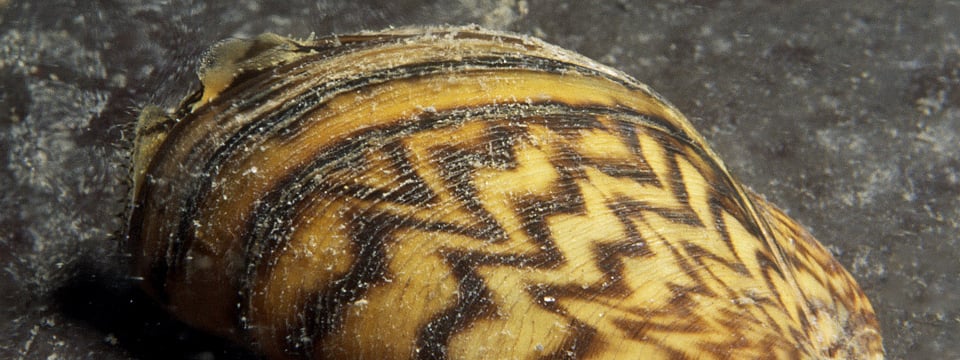Aquatic Invasive Species: What Puts My Lake at Risk?

Aquatic invasive species, or AIS, are those creatures that are not native to a body of water but when introduced in sufficient number can establish a population and diminish the quality of the waterbody.
Most of us are familiar with the “Clean Drain Dry” information campaign to combat AIS at the boat launch. The idea is to prevent the spread of AIS from an infested lake to a noninfested lake via boats and trailers. But if an AIS happens to enter a lake, what makes it such a good candidate for infestation? After all, there are dozens of potential AIS out there, but only a handful have become established nuisances, or worse. Here are a few of the important traits of major AIS in Minnesota waters, whether plant or animal.
The human factor. If a potential AIS has no way to travel from an infested lake to a noninfested lake then there’s no issue. For example, the zebra mussel arrived in the US Great Lakes in the 1980s from ship ballast from the other side of the world. Recreational boats picked up some of the zebra mussels there and transported them to other lakes and rivers in the region and have been spreading ever since.
Arrive in relatively large numbers. When large numbers of AIS arrive at a lake, there is a greater probability that some of them will survive to reproduce. The same principle applies to stocking lakes with walleye fry. We don’t expect all of the fingerlings to survive so we stock many more than are needed as catchable fish later on.
Lack predators, pathogens, and diseases. If a potential AIS enters a lake where its native predators are not present, or diseases from its native country of origin aren’t around, then that AIS will have a better chance of surviving to reproduce.
Tolerate a wide range of environmental conditions. Examples include temperature, salinity, water velocity, and substrate (e.g., rocks, sand, mud). The common carp has been such a prolific invader because it can tolerate and thrive in temperatures from very cold to very warm. Conversely many trout require cold water to survive.
Reproduce quickly and in large numbers. Just as arriving to a lake in large numbers gives a potential AIS an advantage at infesting a new water, being able to reproduce very large numbers of offspring also gives them a leg up on creating a reproducing population. For example, a single female zebra mussel can produce up to a million eggs each year.
We haven’t seen the last AIS in our area lakes and rivers. There will likely always be another one knocking at our door in the future, being transported within our region or from around the world. We need to remain vigilant and always on the lookout for them. And remember to clean, drain, and dry.

Search Archives
Categories
Posts by Topic
- Staff News (98)
- Architecture (66)
- Funding (61)
- Civil Engineering (53)
- Education (48)
- Architectural Design (38)
- Engineering (37)
- Land Surveying (32)
- Surveying (26)
- Environmental (22)
- Commercial (21)
- Interior Design (18)
- Streets & Highways (17)
- Utilities (17)
- Water Resources Engineering (14)
- Industrial (13)
- Community (11)
- Cultural (11)
- Landscape Architecture (11)
- Sports & Recreation (11)
- Government (10)
- Aerial Mapping (8)
- Mechanical Engineering (8)
- GIS (7)
- Electrical Engineering (6)
- Structural Engineering (6)
- Senior Living (5)
- Transportation Engineering (5)
- Bridges (3)
- Site Design (3)
- Transmission & Distribution (3)
- Healthcare (2)
- Planning (2)
- manufacturing (1)
Recent Posts
-
May 06, 2024



